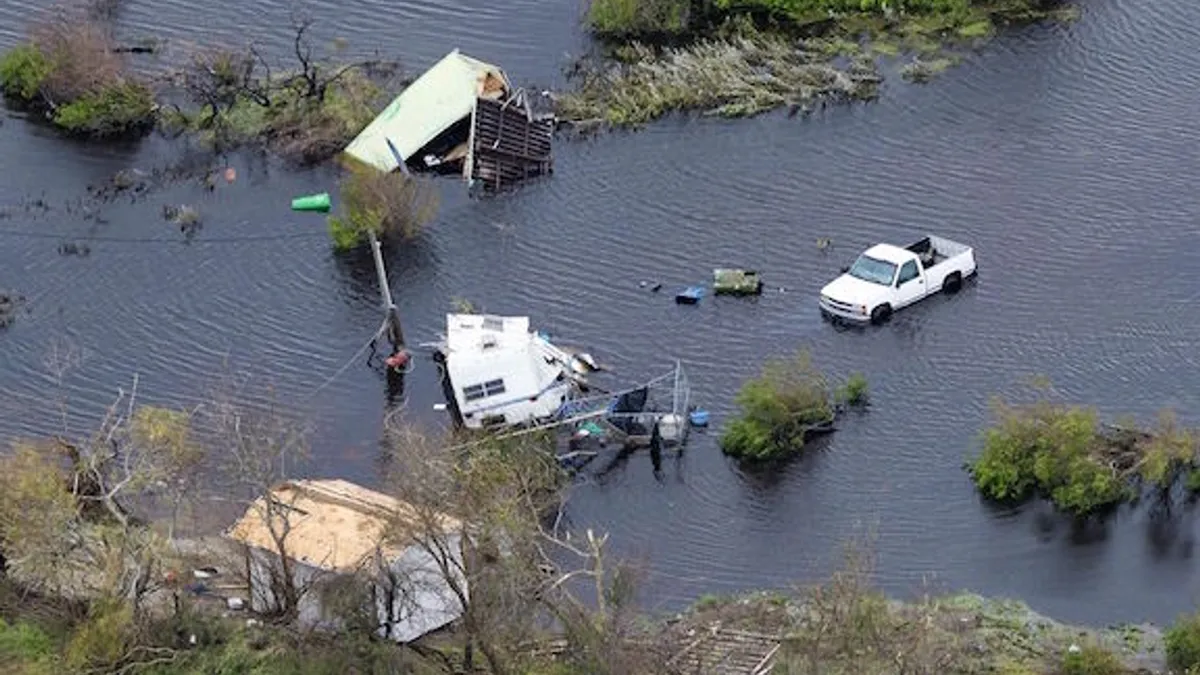Dive Brief:
- More U.S. cities are taking action against climate change and expanding existing goals, according to the latest scorecard from the American Council for an Energy-Efficient Economy (ACEEE). Cities took on more than 265 initiatives between January 2017 and April 2019.
- The scorecard ranks 75 U.S. cities, noting those that excel at climate goals and those that could use improvement. Cincinnati, OH; Hartford, CT; and Providence, RI are considered cities to watch because they have significantly improved since the last scorecard was released in 2017 due to their adoption of several major clean energy policies and programs, yet they did not make the top 10. The top 10 cities are:
- Boston
- San Francisco
- Seattle
- Minneapolis
- Washington, DC
- New York City
- Los Angeles
- Denver
- Austin, TX
- Portland, OR
- The report says most of the cities with climate goals are not on track to achieve them, or do not actually track their progress. Almost 35% have not set greenhouse gas reduction targets. Of those with greenhouse gas reduction targets, nearly half are not fully tracking their progress. "Some cities will need to redouble their efforts," David Ribeiro, senior research manager at ACEEE, said during a webinar covering the study findings.
Dive Insight:
This is the fourth edition of the scorecard and the first time it tracked cities' progress toward renewable energy in addition to energy efficiency, but it's not the first time concerns have been raised about cities' ambitions. Previous editions listed "most improved" cities, but this year's scorecard eliminated that category. Instead, it named Cincinnati, Hartford and Providence as "cities to watch" for their progress on clean energy goals, which include transportation emissions reduction, zoning policies, parking policies, distributed energy systems and engaging low-income communities and communities of color in environmental planning.
Equity emerged as a recurring theme among speakers during the webinar, and it was one metric by which ACEEE determined cities' rankings. Ribeiro said more cities are engaging marginalized communities in energy efficiency and taking steps to ensure procedural and structural equity and inclusivity. For example, Minneapolis set up "green zones" on both the north and south sides of the city, highlighting the "cross-sections of poverty and pollution and to prioritize solutions in those areas," Mayor Jacob Frey said.
This year Minneapolis approved energy disclosure policies to help people buying or renting a home make informed decisions. The time-of-rent policy will require landlords to disclose to potential renters the unit's average energy cost per square food. The time-of-sale policy will require sellers to disclose energy efficiency information prior to sale.
Boston is expanding training so all citizens throughout the city and those who speak a variety of languages can spread the word about energy efficiency opportunities, said Carl Spector, Boston's commissioner of the Environment Department.
Speakers highlighted the importance of collaboration among a variety of public and private sector entities to meet energy efficiency and climate goals.
"One of the reasons we're able to succeed in Boston is it's a whole city effort," Spector said. He also mentioned collaborating with other levels of government — in this case, the state of Massachusetts, which has "aggressive climate goals" and reporting requirements, such as requiring utilities to develop energy efficiency programs. Although it's a state requirement, Boston leaders found it effective for the city to reach out to businesses and institutions to ensure they're fully aware of the energy efficiency opportunities.
Cities also can learn from one another and collaborate regionally to achieve greater success. Speakers reported idea-sharing at the city staff level as well as at higher levels, such as the cooperation among the Climate Mayors. Ribeiro confirmed that ACEEE tries to use best practice measuring metrics that are replicable in other cities. Improving regional transit's energy efficiency and implementing energy efficient building codes are two areas well-suited for such collaboration.
Speakers emphasized that cities of all sizes can participate in climate action and improve their energy efficiency.
"Energy efficiency is a beautiful example of providing deep benefits to people who need them most, no matter where you are in the country," said Debbie Raphael, director of San Francisco's Department of the Environment.
Small and mid-sized cities can work toward policies, for example, that lower citizens' energy bills, allowing low-income residents to have more money available to spend on other things. Similarly, they can help small business owners realize energy savings, which helps the economy. "It's not often that government can come in and improve lives so dramatically and so quickly. These energy efficiency efforts are a wonderful way for government to show value," Raphael said.
Other economic benefits include job creation through retrofitting buildings to comply with a city's energy efficiency requirements.
The ACEEE study says cities are making greater progress on advancing buildings' energy efficiency and emissions reductions than on transportation. But cities should take a holistic view of the issue to have the most impact.
"It's important to take a broad look at energy use. We need to connect new housing to transit and bike lanes" in addition to advancing other energy efficiency policies and investments, Raphael said.












